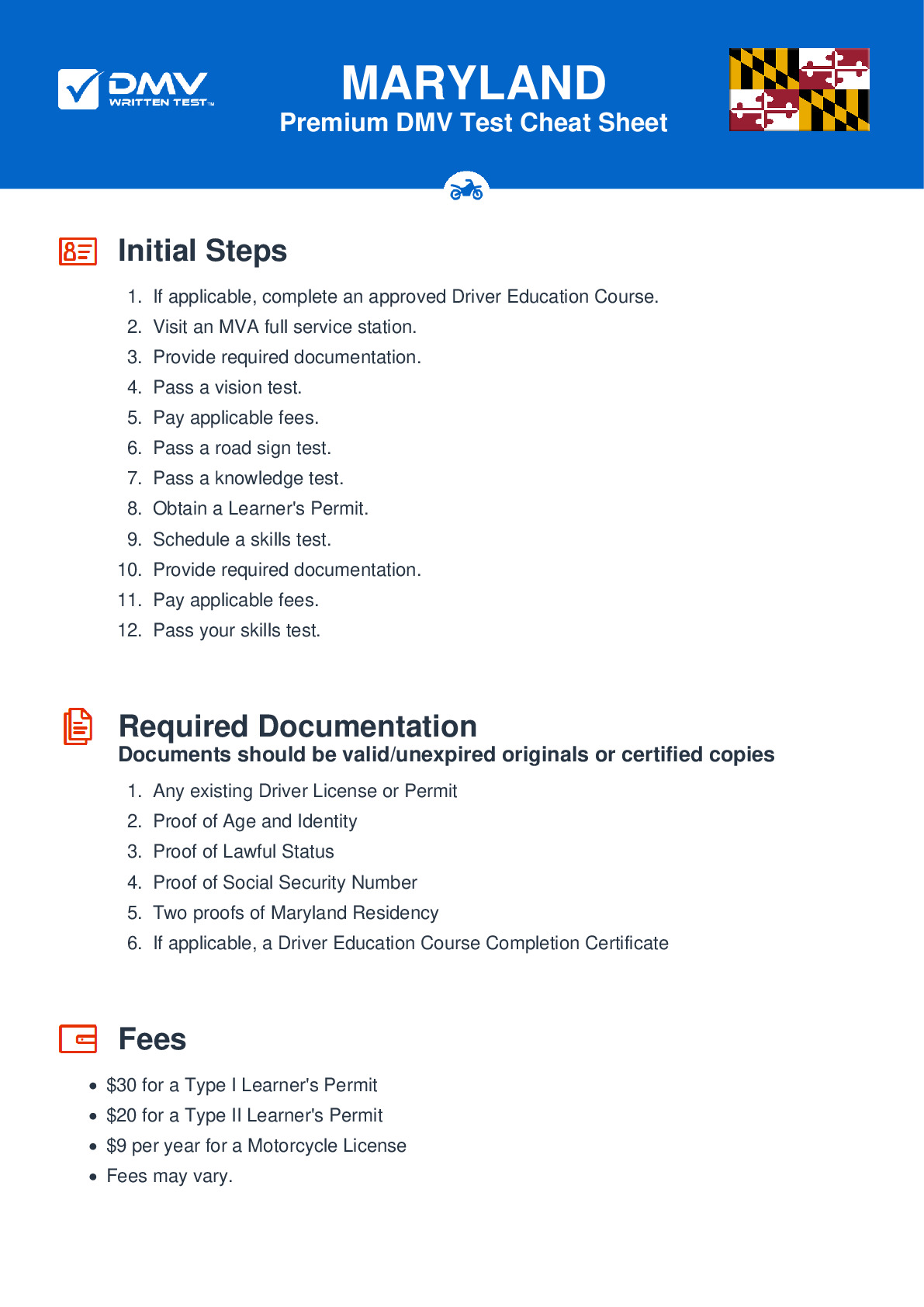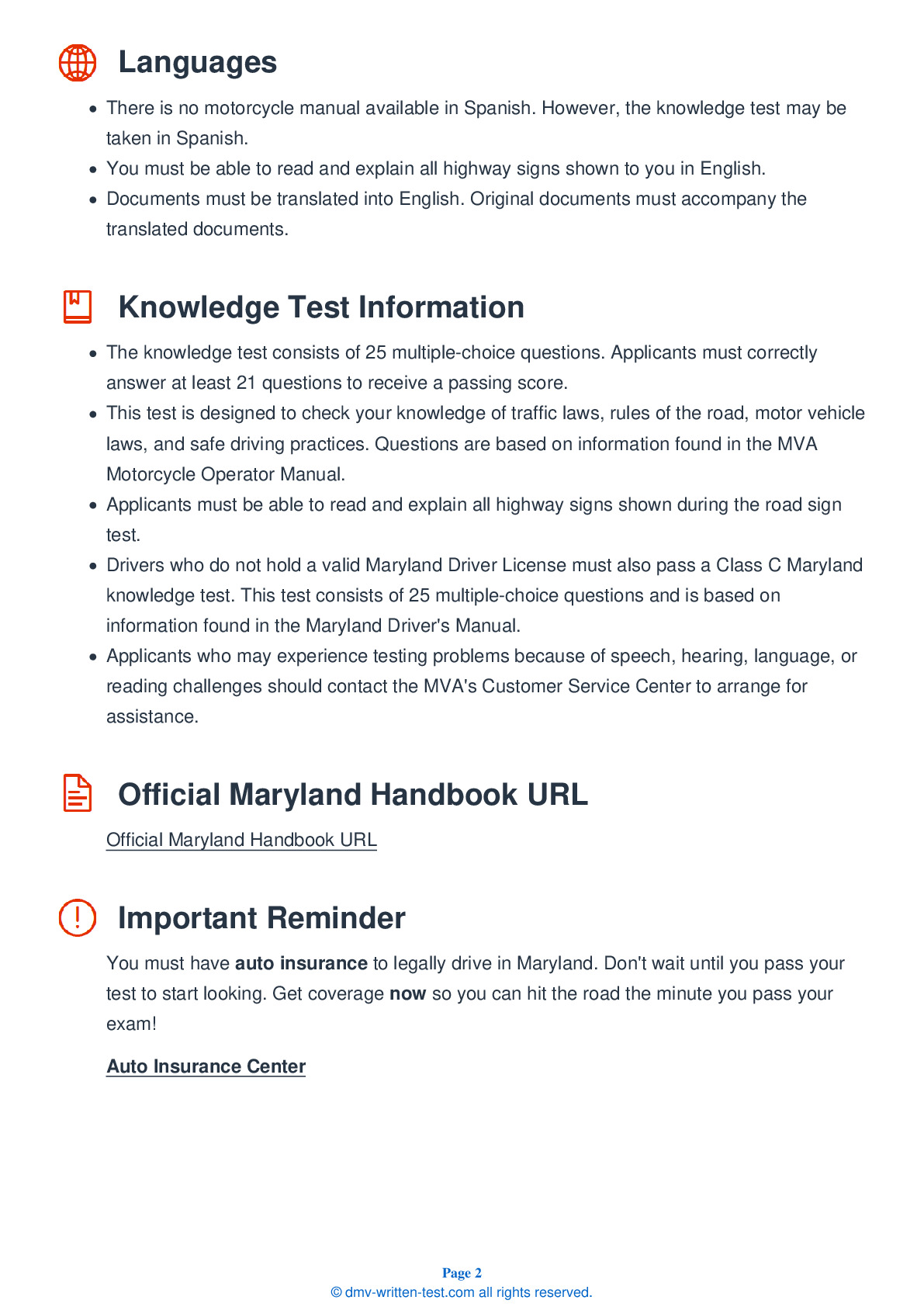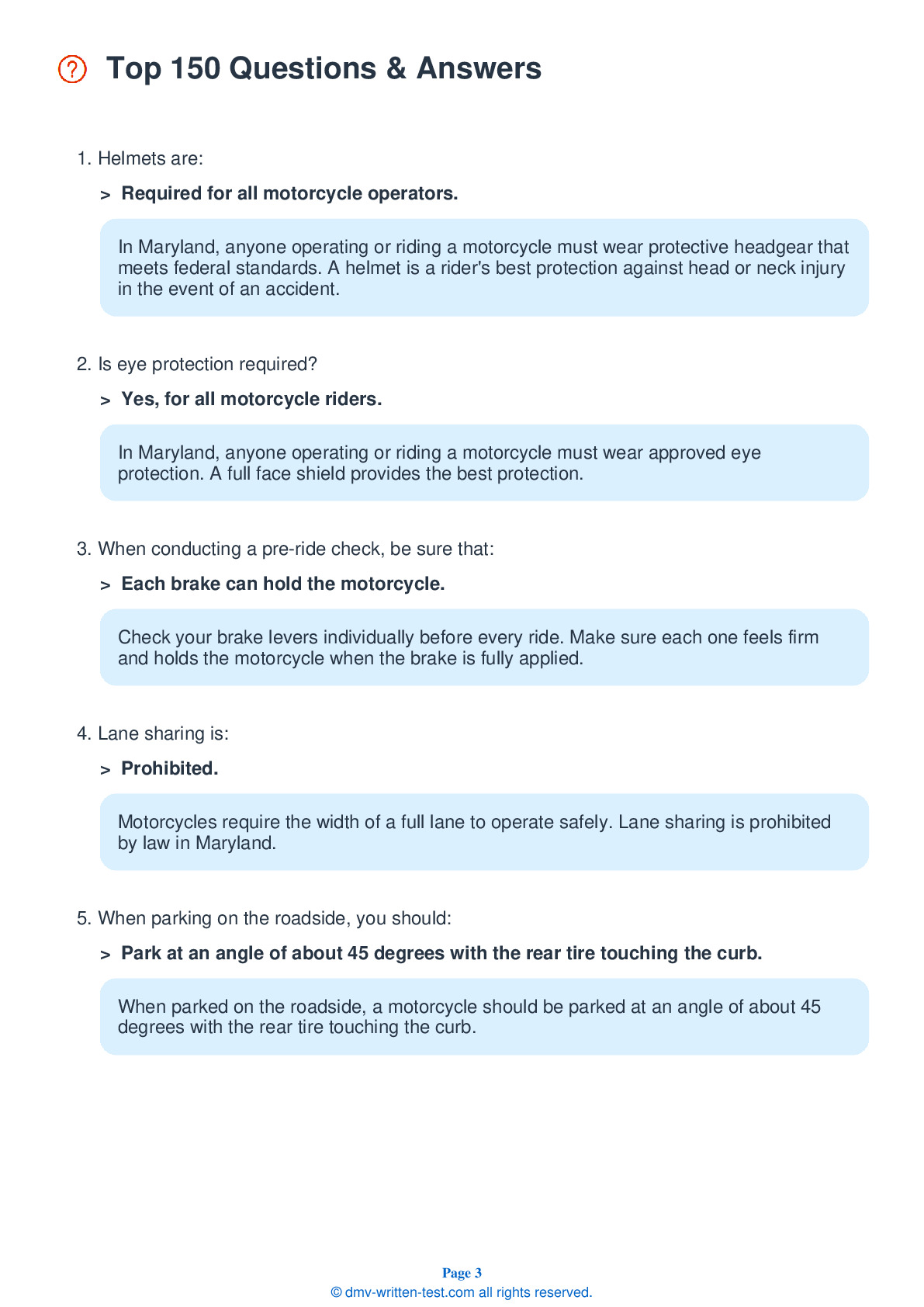2025 Maryland Motorcycle Permit Test 5
The following questions are from real DMV written motorcycle permit tests. These are some of the actual permit questions you will face in Maryland when getting your motorcycle learners permit. Each motorcycle theory practice test question has three answer choices. Select one answer for each question and select "grade this section." You can find this button at the bottom of the drivers license quiz. For a complete list of questions and answers for Maryland please visit https://cheat-sheets.dmv-written-test.com/en/maryland/motorcycle.
Number of Tests
Number of Question
Passing Score
19. An adequate cushion of space between your motorcycle and other vehicles:
Explanation
Maintaining a cushion of space on all sides of your motorcycle helps to ensure that you have time and space to react if another road user makes a mistake.
20. Generally, the body eliminates how many alcoholic drinks per hour?
Explanation
On average, a person's body can eliminate the alcohol content of about one drink per hour. The amount of time required to lower a person's blood alcohol content (BAC) can vary, so it is safest not to operate any motor vehicle after consuming any amount of alcohol.
21. How can you discourage another vehicle from sharing your lane?
Explanation
To discourage automobile drivers from trying to share your lane, ride in the center portion of the lane.
22. Who should set the pace in a group of riders?
Explanation
The last rider in a group of motorcyclists should set the pace of travel. Having the last rider set the pace will ensure that no riders are left behind.
23. A plastic, shatter-resistant face shield:
Explanation
A plastic, shatter-resistant face shield can help protect your whole face in a crash. While goggles can protect your eyes, they won't protect the rest of your face. A windshield is not a substitute for a face shield or goggles.
24. Fatigue can be increased by:
Explanation
To reduce the danger of fatigue when riding, dress to protect yourself against tiring weather conditions, such as wind and rain. Limit yourself to no more than about six hours of riding per day and stop for a break at least once every two hours. Avoid taking artificial stimulants since you may experience extreme fatigue when they start to wear off.
25. If you must brake and swerve to avoid a hazard, you should:
Explanation




